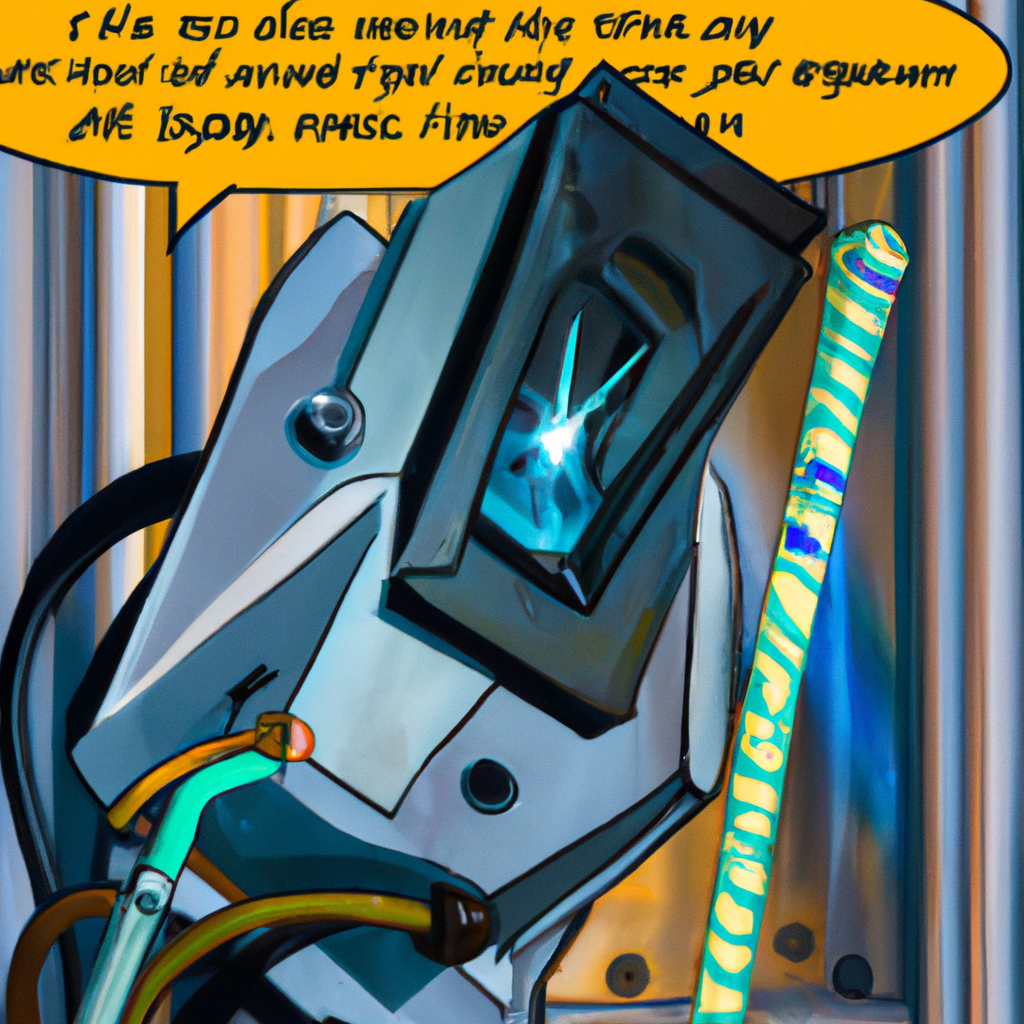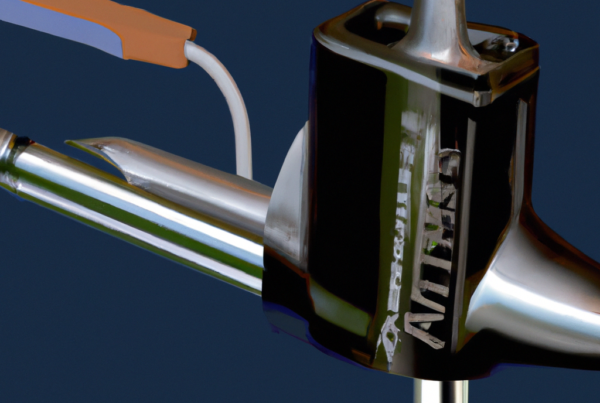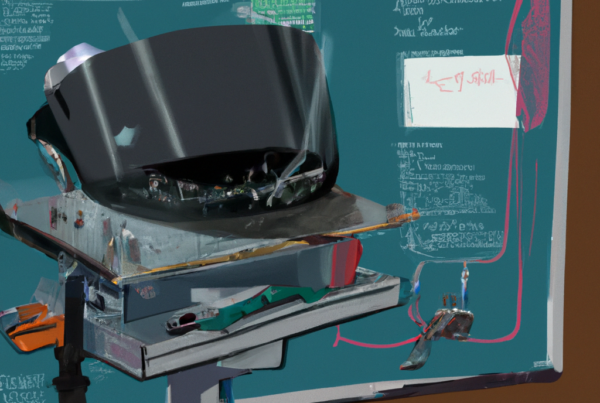Are you having trouble with your welder tripping the breaker? If so, you’re not alone. This is a common problem that can be caused by a range of issues, from a broken feeder cable to an overloaded circuit. Luckily, it’s a problem that can be easily solved – but you’ll need an expert’s help to get the job done right. As a certified welding professional with decades of experience, I can help you identify the issue and get your welder up and running safely. Don’t let a tripping breaker slow you down – let’s get to work together and get your welding project back on track.

What type of welder is it?
A welder is a device used to permanently join two pieces of metal together using an electric current. There are several types of welders, each designed for a specific purpose. These include MIG (Metal Inert Gas) welders, TIG (Tungsten Inert Gas) welders, arc welders, and plasma cutters.
MIG welders are one of the most popular types of welders and are used for welding thin metal sheets. They are relatively easy to use and require minimal setup. This type of welder utilizes a wire that is fed through a welding gun and is heated by electricity to create a weld.
TIG welders are used for welding thicker pieces of metal and are more difficult to use than MIG welders. They are more precise and require more skill to use. Instead of a wire, they use a tungsten electrode which is heated to a high temperature by an electric arc.
Arc welders are used for welding thicker pieces of metal than MIG welders. They use a consumable electrode that is heated by an electric arc. Arc welders are more powerful than MIG welders and require more skill to use.
Plasma cutters are used to cut thick pieces of metal and are more powerful than MIG welders. They use an electric arc to generate a high-temperature plasma that is capable of cutting through metal.
Why does my welder keep tripping the breaker? This could be caused by several things:
- The welder is being used at a higher amperage than the breaker rating.
- The power cord is too short for the power being used.
How is the welder connected to the power source?
To understand why your welder keeps tripping the breaker, it is important to know how it is connected to the power source. Generally, welders are connected to the power source in the following ways:
- Direct Connection – The welder is connected directly to the power source using heavy-duty cords. This is the most common way to connect a welder to the power source.
- Indirect Connection – The welder is connected to the power source through a transformer. This is often used when the voltage of the power source is too high for the welder.
When connecting a welder directly to the power source, a ground fault circuit interrupter (GFCI) is recommended. This device monitors the electricity flow and will trip the breaker if it detects a surge or an imbalance in the current. The breaker should be rated at a minimum of 80 amps for a welder.
It is also important to make sure the wiring is properly sized for the power source. The electrical wire should be rated for at least 15 amps per square foot. If the wiring is too small, then it could cause too much current to flow and trip the breaker.
Finally, check the power source itself. Make sure the voltage is not too high for the welder. The output should be around 80 volts, with a maximum of 120 volts.
If you have taken all the necessary steps to properly connect your welder to the power source and it is still tripping the breaker, then you may need to contact a professional electrician for assistance.
Is the breaker rated for the welder?
If your welder keeps tripping the breaker, it may be because the breaker is not rated for the welder’s current draw or amperage. Generally, welders have a recommended circuit breaker size, which should be printed in the specifications of the machine. If the breaker is not rated to handle the current draw, the breaker will trip and shut off the power to the welder.
To ensure the breaker is rated properly for your welder, you should:
- Check the machine’s specifications to determine the recommended circuit breaker size for the welder.
- Verify that the circuit breaker installed is rated for the current draw (amps) of the welder.
- If the circuit breaker is not rated for the current draw, replace the breaker with one that is rated for the current draw.
The recommended circuit breaker size for most welders is 80 amps, with a maximum of 120 amps. It is important to check the specifications of your welder and ensure the circuit breaker is rated properly for the current draw.
Is the welder grounded properly?
When a welder keeps tripping the breaker, it is important to check that the welder is properly grounded. Proper grounding helps ensure that the welder is running safely, and it is especially important when using higher amperage welders. Here are the steps to check if the welder is grounded properly:
1. Make sure the grounding clip is properly connected to the machine and that all connections are clean and secure.
2. Check the ground wire for any breaks or damage.
3. Ensure the ground wire is properly connected to the machine and to a secure ground point.
4. Check the amperage on the machine. It should be around 80. Higher amperage may cause the breaker to trip.
5. Check the machine’s power source. If the power source is not providing enough power, the breaker may trip.
6. Make sure the machine is not overloaded. If the machine is being used for too much at once, it can cause the breaker to trip.
If all of these steps have been taken and the welder is still tripping the breaker, it may be time to call a professional. A professional can help diagnose the issue and get the welder working properly again.
Is the welding cable in good condition?
Why does my welder keep tripping the breaker?
There are a few potential reasons why your welder is tripping the breaker. The first and most important factor is the condition of the welding cable. If the cable is not in good condition, it could be causing a short circuit, leading to the breaker tripping.
To check the condition of the cable, there are a few things to look for:
- Check the outer insulation of the cable for any cracking, fraying, or other signs of damage.
- Check for any loose or corroded connections.
- Check the amp rating of the cable. It should be rated for at least 15 amps more than the amp rating of your welder.
If the cable passes these checks, then the issue may lie elsewhere. Other potential causes of the breaker tripping are:
- Incorrectly sized circuit breaker – it should be rated for at least 15 amps more than the amp rating of your welder.
- Overloaded circuit – make sure the circuit is not overloaded with other appliances.
- Loose connections – check all connections for signs of looseness or corrosion.
Once you’ve checked the welding cable and the other factors, you should have a better idea as to why your welder keeps tripping the breaker. If you still can’t find the cause, then it may be time to call a professional electrician to help you diagnose and fix the issue.
Is the welding cable sized properly?
The size of the welding cable is an important factor in preventing your welder from tripping the breaker. In order to determine if the welding cable is properly sized, you should look at the following factors:
- The welding cable should be matched to the size of the welding machine.
- The length of the welding cable should be considered. The longer the cable, the larger the size should be.
- The amount of current that will be running through the cable should be considered. The more current, the larger the cable size should be.
If the welding cable is not sized properly, it may not be able to handle the amount of current that is needed for the welding machine. This can cause the breaker to trip, as it is designed to protect the wiring from damage due to an overload. It is important to make sure that the welding cable is the correct size for the job at hand.
Is the power source supplying the correct voltage?
Why does my welder keep tripping the breaker? There are several possible causes for this issue:
1. The power source supplying the welder may not be supplying the correct voltage. This could be caused by a faulty power supply or an incorrect power setting. To check the voltage, use a multimeter to measure the voltage at the power source and compare it to the required voltage for your welder. The voltage should be around 80 volts (maximum 120 volts).
2. The circuit breaker may be tripping due to an overload. This could be caused by a faulty component or too much current being drawn from the circuit. To test for this, use an amp meter to measure the current and make sure it is not too high. If the current is too high, you may need to replace the component or use a circuit with a higher amperage rating.
3. The power cord may be damaged or not connected properly. Inspect the power cord for any signs of damage and check the connections to ensure they are secure. If the power cord is damaged, you will need to replace it.
4. The welder may not be properly grounded. Make sure the welder is plugged into a grounded outlet and the ground cable is securely connected to the welder. This will help prevent the circuit from tripping.
These are some of the possible causes for why your welder is tripping the breaker. If you are still having problems, you should consult a qualified electrician for further assistance.
Is the welder being operated at the proper amperage?
In order to determine why your welder keeps tripping the breaker, you need to check if it is being operated at the proper amperage. Here are some steps you can take to ensure that your welder is running at the proper amperage:
- Check the manufacturer’s instructions for the correct amperage for your welder.
- Check the amperage setting on your welder.
- Make sure all welds are made within the manufacturer’s specifications.
The correct amperage for your welder should be between 80 and 120 amps. If the amperage is too high, it can cause the breaker to trip, so it is important to make sure the amperage is set correctly. If the amperage is set too low, the welds may not be of the best quality.
If you are confident that the amperage is set correctly and the welder is still tripping the breaker, it may indicate an electrical issue or a problem with the welder itself. In this case, it is recommended that you seek professional help to diagnose and repair the issue.
Has the welder been serviced recently?
Why does my welder keep tripping the breaker?
If your welder is tripping the circuit breaker, it could be due to a few different causes. Here are some of the most common:
- The circuit breaker is not rated for the load of the welder. If the breaker is not rated for the amount of current the welder requires, it will trip when the welder is turned on.
- The circuit is overloaded. If there are too many appliances drawing power from the same circuit, it could cause the breaker to trip.
- The wiring is damaged or corroded. This could cause the breaker to trip if the electricity is not being conducted properly.
It is important to make sure that the welder has been serviced recently. If the welder has not been serviced, it could be the cause of the breaker tripping. The welder should be serviced every 6-12 months or after 300-400 hours of operation. A qualified service technician will check the wiring, connections, and other components for any signs of wear or damage. They will also check the flow of electricity to make sure it is within the manufacturer’s recommended limits.
By having the welder serviced regularly, you can help prevent it from tripping the breaker. If the breaker continues to trip after the welder has been serviced, it is important to contact a qualified electrician to inspect the wiring and circuit breaker.
Are there any loose connections?
If your welder is tripping the breaker, the most likely cause is a loose connection. This could be in the wiring, the terminals or the plug. Here are some of the most common causes of loose connections:
- Loose wiring – Check the wiring for any loose connections. Make sure all connections are tight and secure.
- Loose terminals – Check the terminals for any loose connections. Make sure they are tight and secure.
- Loose plug – Check the plug for any loose connections. Make sure the plug is firmly seated in the outlet.
If you have checked the wiring, terminals and plug and they are all tight and secure, then you may need to check the breaker. The breaker could be too small for the welder’s power requirements, or it may be faulty. If the breaker is faulty, you will need to replace it.
If the problem persists, it could be due to a faulty welder or a faulty power source. You may need to take the welder to a qualified technician for inspection and repair.



